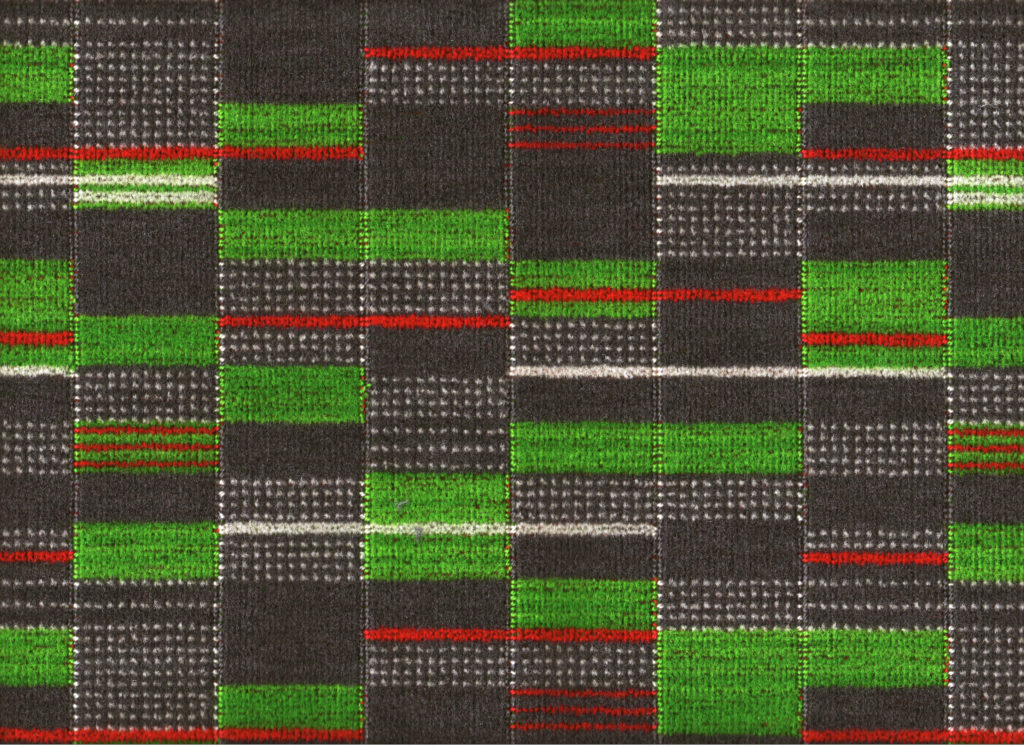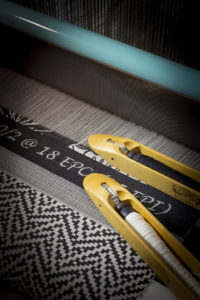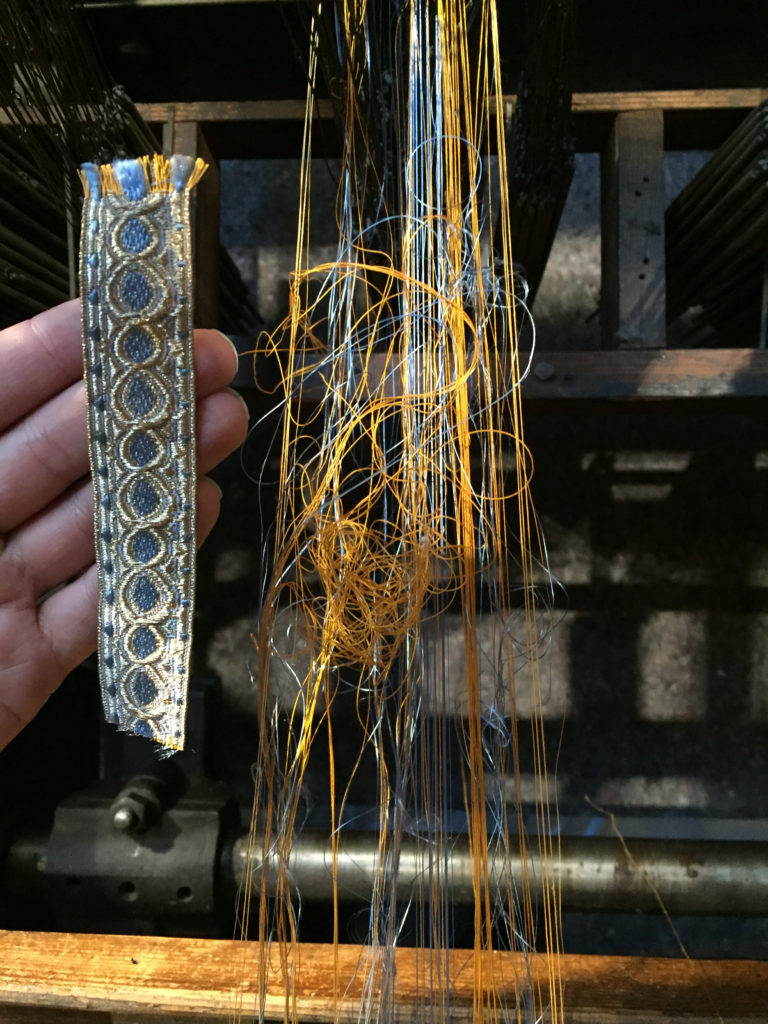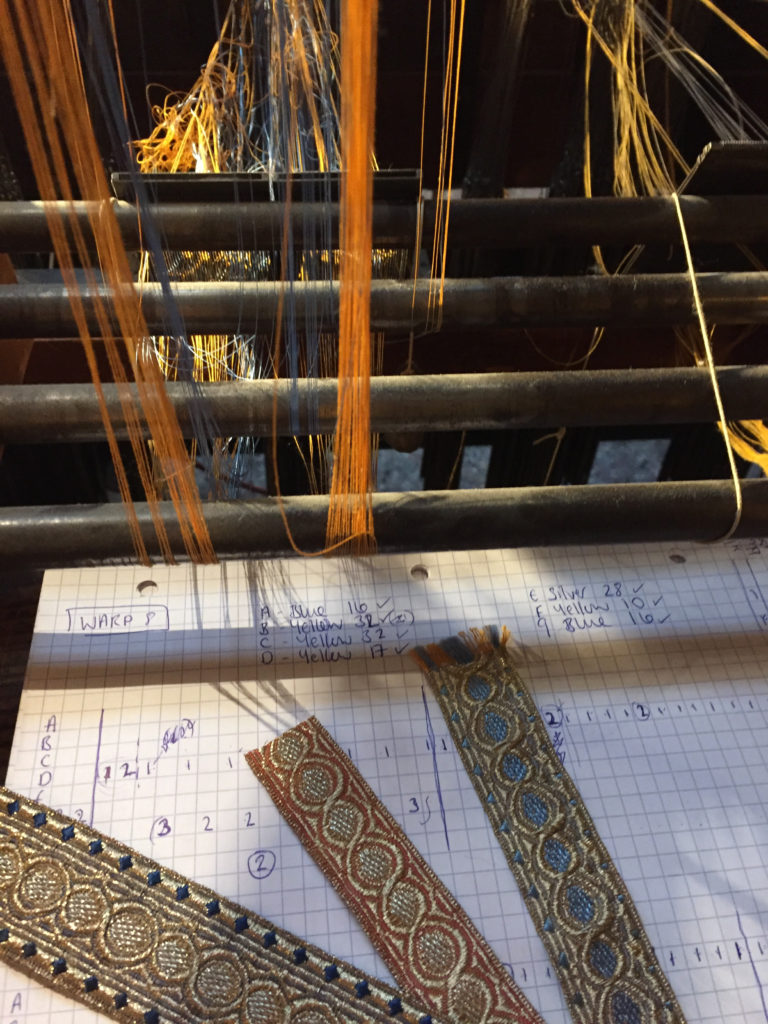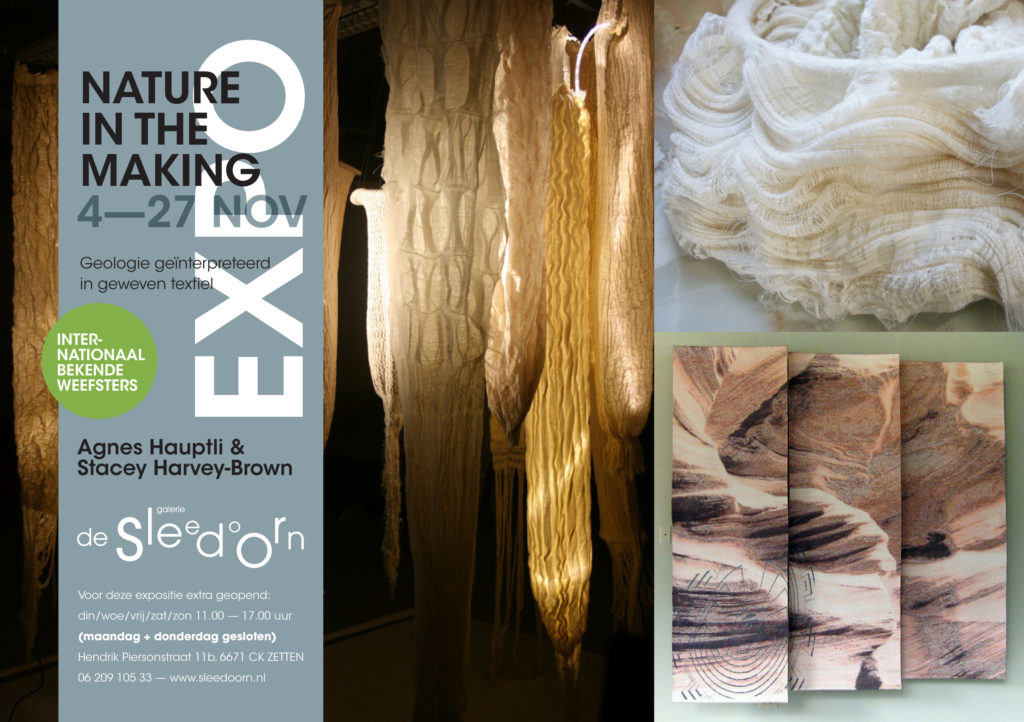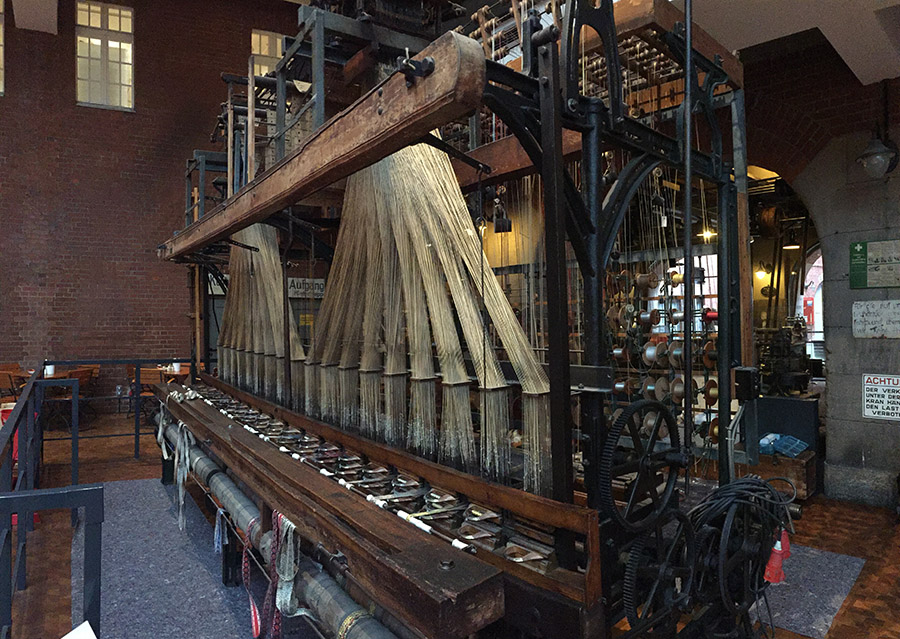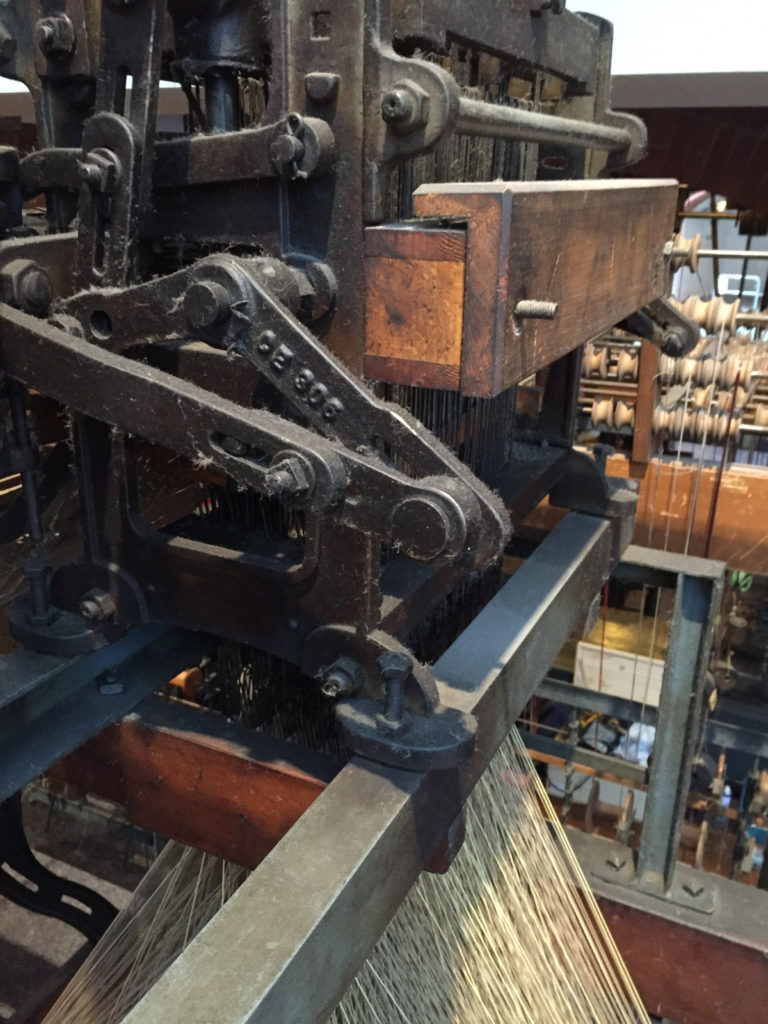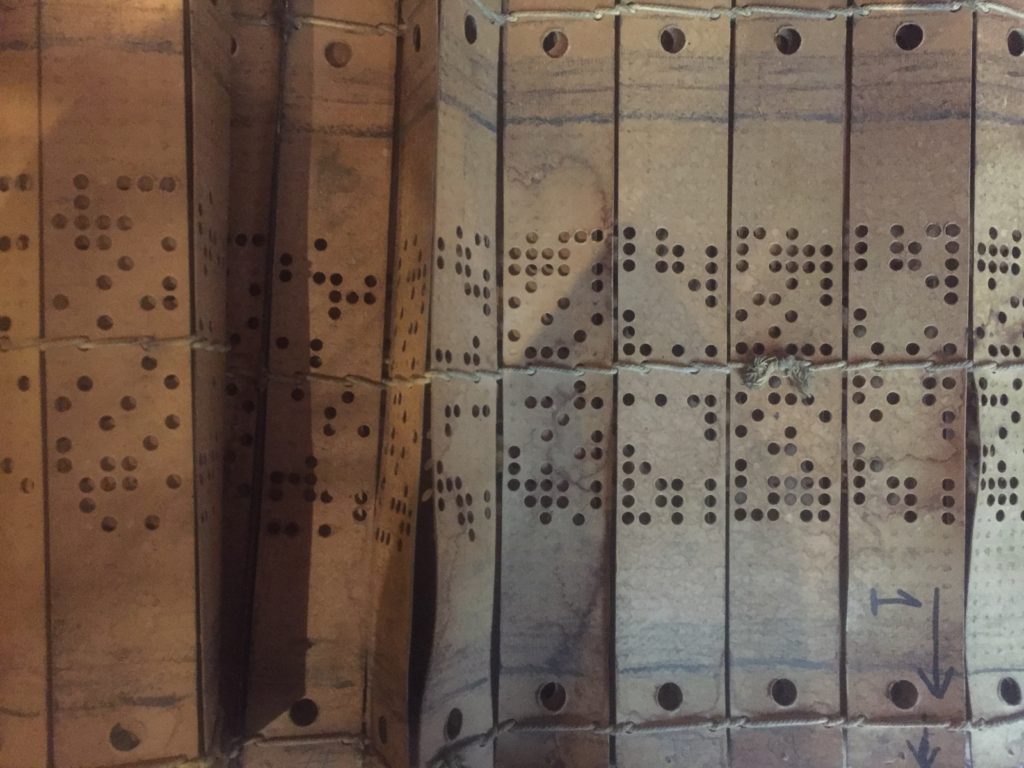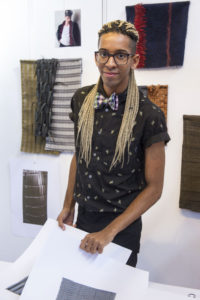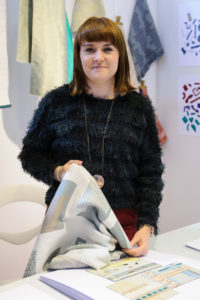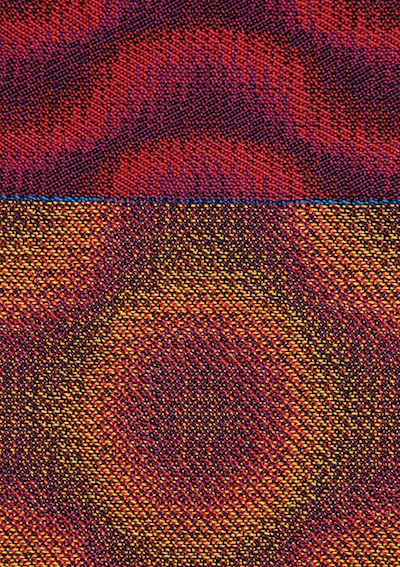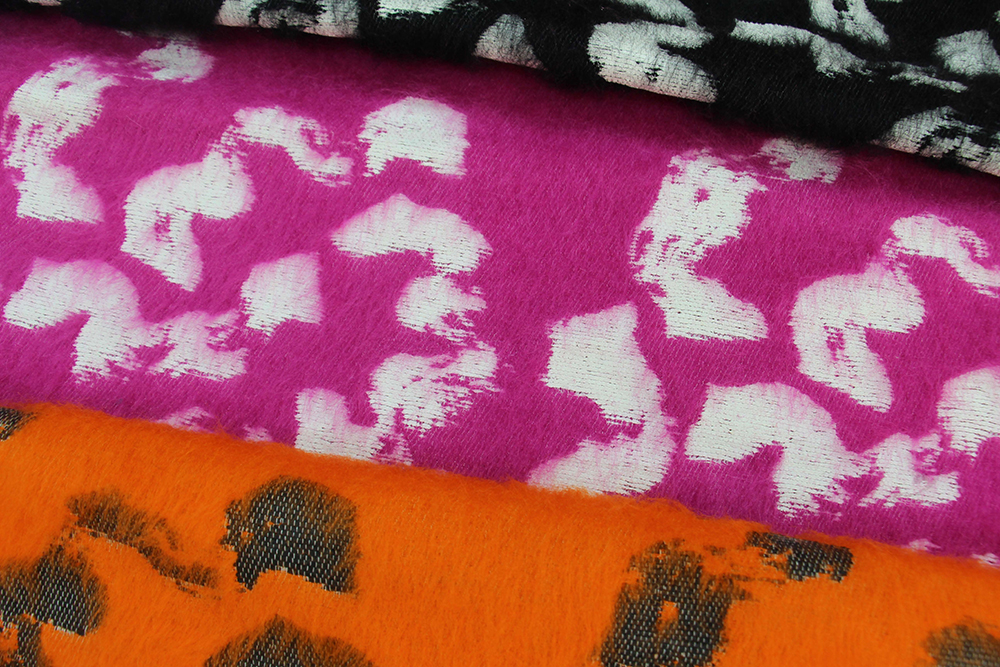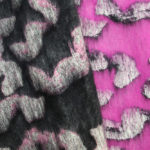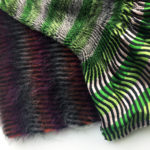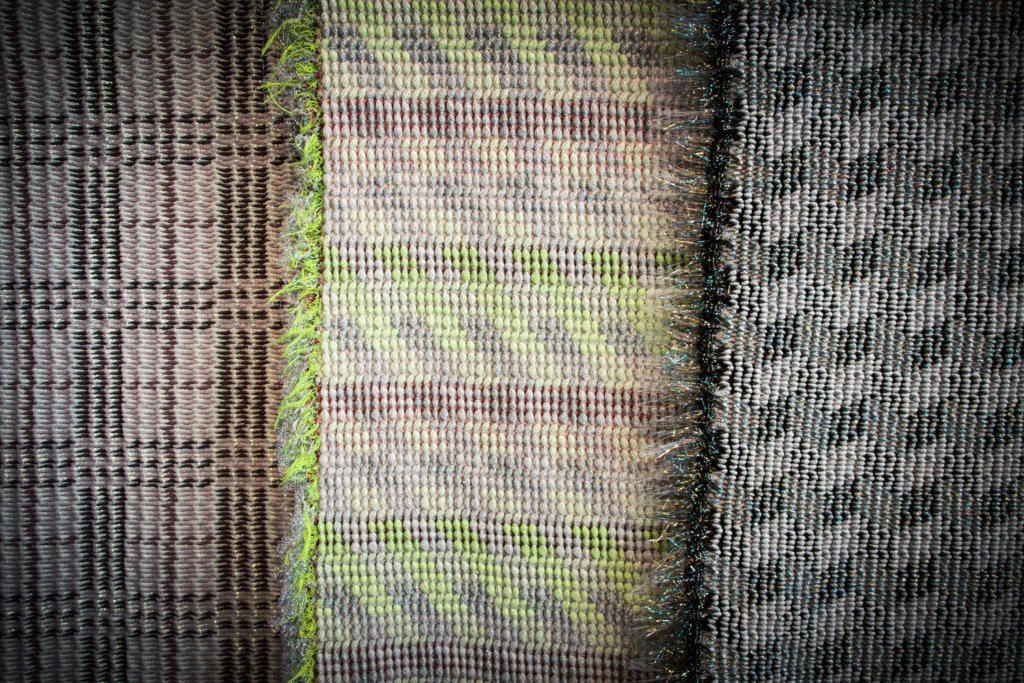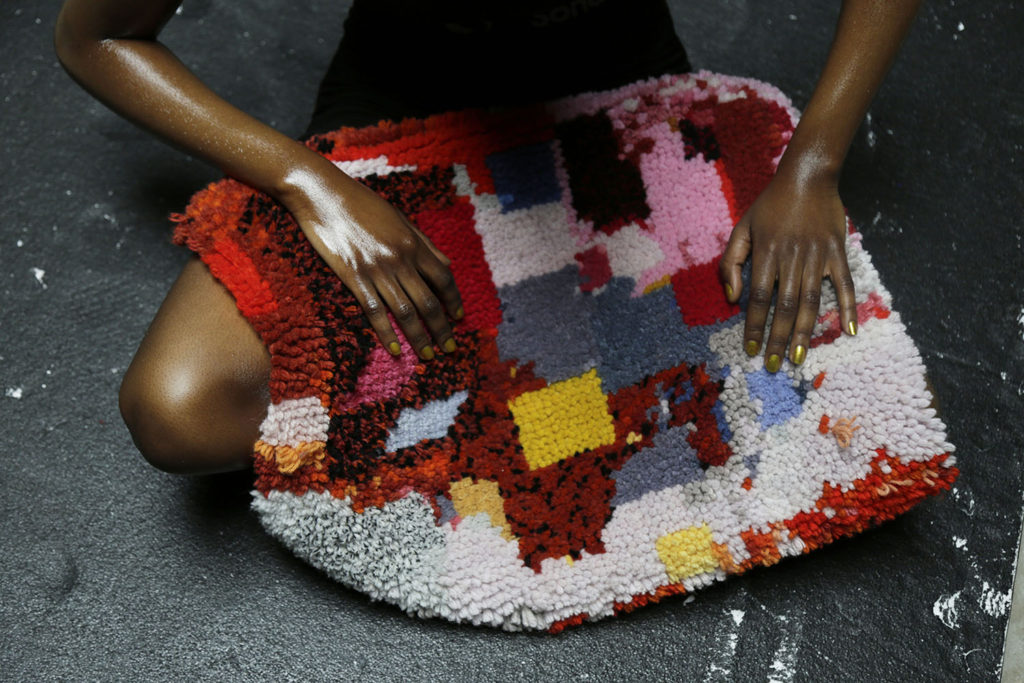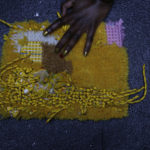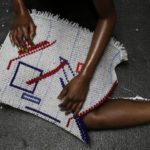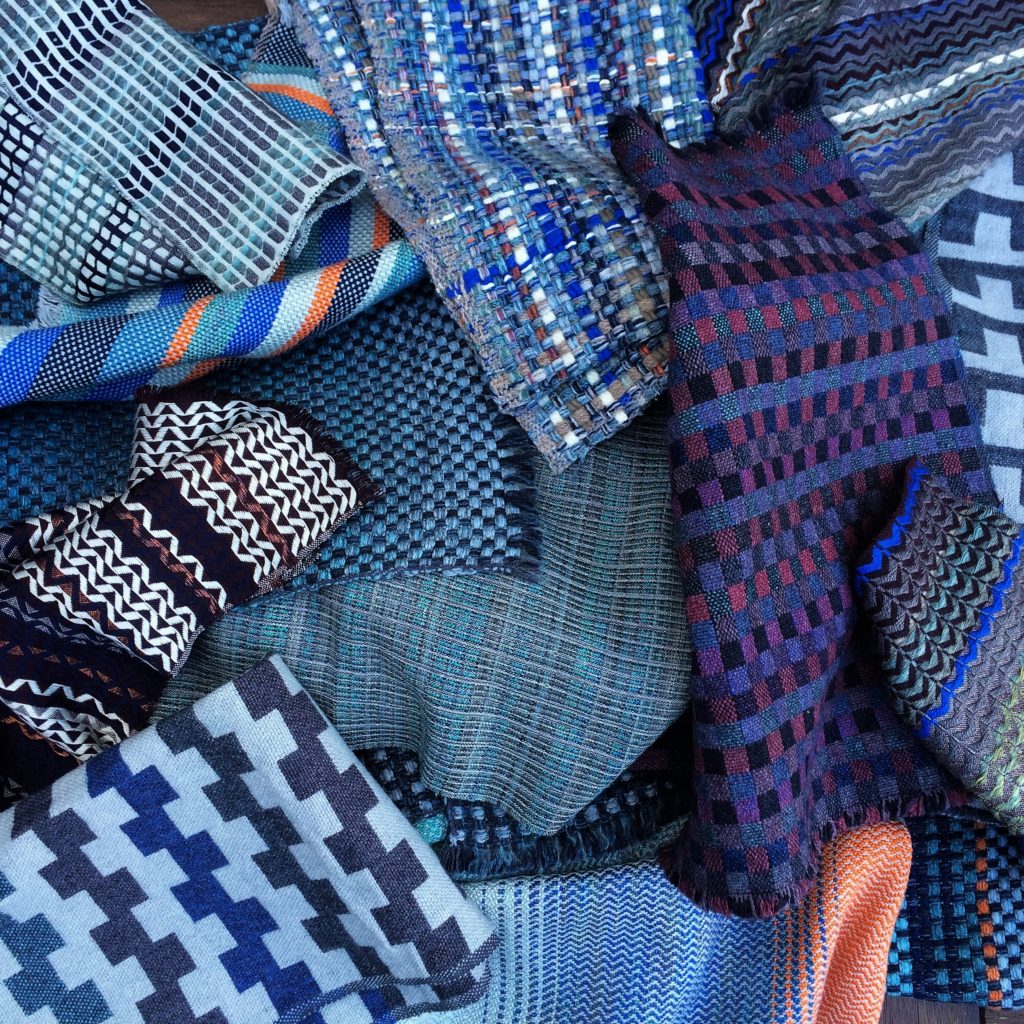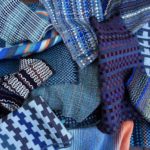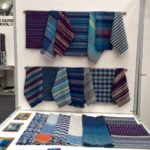 Weaving Futures is an exhibition at London Transport Museum highlighting the importance of woven textile design to the London Transport system. The exhibition explores the process and making of digital woven textiles, as part of the Museums’, Designology season.
Weaving Futures is an exhibition at London Transport Museum highlighting the importance of woven textile design to the London Transport system. The exhibition explores the process and making of digital woven textiles, as part of the Museums’, Designology season.
Each week, visitors will be able to see invited designers/artists in residence in the Designology studio, who will be working on a project brief and interacting with a weaver. The weavers will be interpreting the residents work live into digital woven textile prototypes and final works on a state-of-the-art TC2 digital jacquard loom.Â
The first residents in the ‘Weaving Futures’ Studio are Wallace Sewell
Residency dates: 21st – 26th Nov 2016
Activity days: 22nd & 26th Nov 2016
The Designology, Weaving Futures Studio is open at all the times the museum is open. Vistors very welcome
Weaving Future exhibition dates: 22 November 2016 to 18 February 2017
About Wallace Sewell
UK based British design studio, Wallace Sewell, was established by Harriet Wallace-Jones and Emma Sewell after graduating from The Royal College of Art in 1990. Their diverse portfolio includes scarves for the Tate museums as well as moquette fabric designs for Transport for London’s underground seating.
When exhibiting for the first time in 1992, their pieces created much enthusiasm and interest, particularly from Barney’s, New York who placed an order for scarves. This proved instrumental in kick starting the Wallace Sewell brand. Barneys are still buying today and Wallace Sewell now supply over 200 stockists in 20 countries.
They have worked with various boutique hotels, designing and producing bespoke bedspreads and more recently have been invited to be guest designers for an international retail brand. Working from their studio in London and their Dorset outpost, this progressive design duo pioneers excellence and originality within their woven products.
Combining innovation with practical solutions, Wallace Sewell is known for their use of colour, structure and yarn in surprising geometric formats. Inspired by paintings, they create individual contemporary fabrics with strikingly bold, asymmetric blocks and stripes of varying scales, which bring together a plethora of elements within one piece.
Continue reading →

